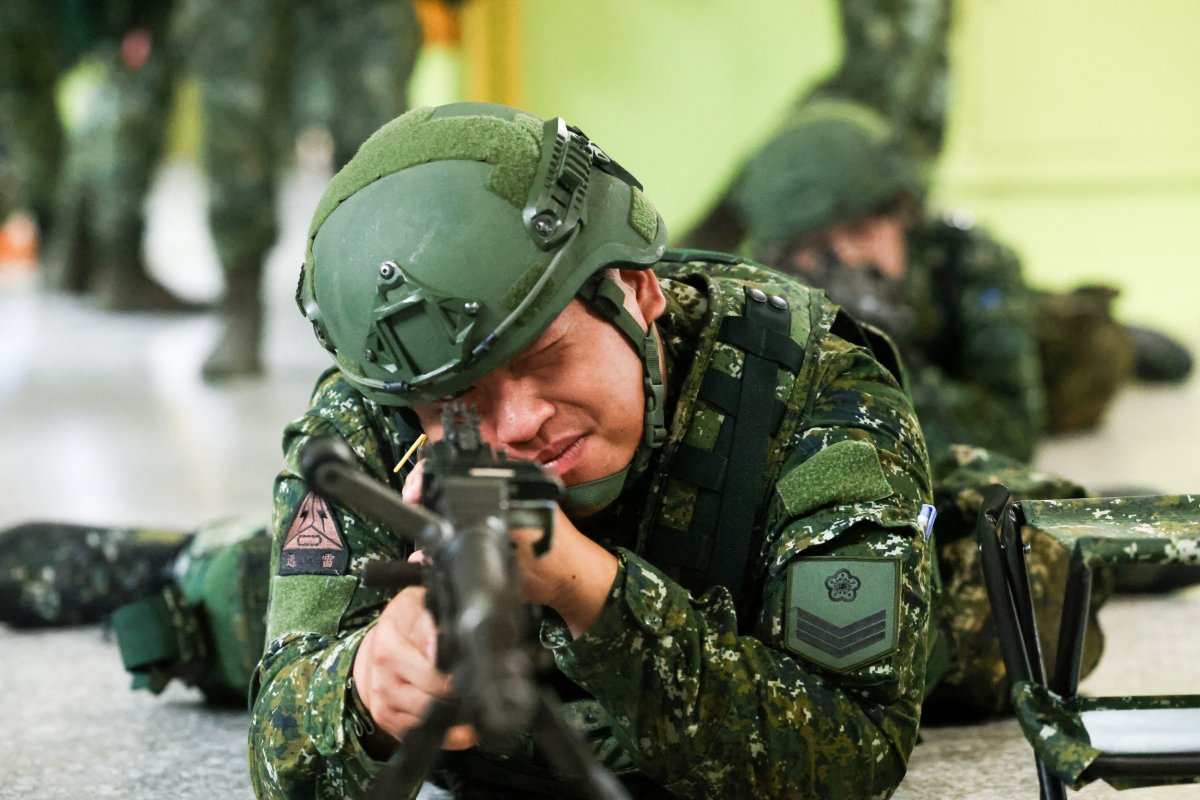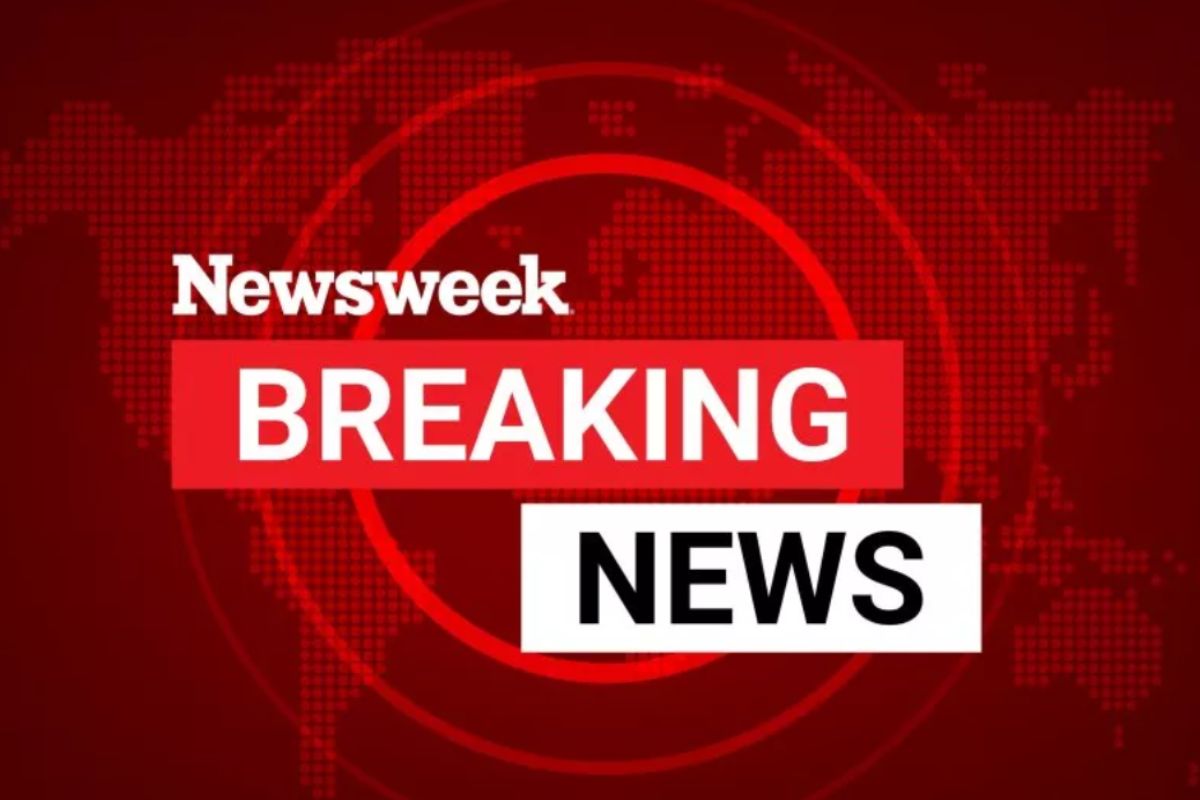PROTECT YOUR DNA WITH QUANTUM TECHNOLOGY
Orgo-Life the new way to the future Advertising by AdpathwayTaiwan's largest annual military exercise will showcase newly acquired U.S.-made tanks and missile systems that one analyst told Newsweek will make any invasion attempt by China more costly.
The hardware will feature in the live-fire component of the Han Kuang exercise, which began Wednesday and will run for a record 10 days—double the usual length—with an additional 7,000 reservists called up to test their combat readiness.
Newsweek reached out to the Taiwanese Defense Ministry and Chinese Foreign Ministry via written requests for response.
Why It Matters
The 41st Han Kuang exercise is being held against the backdrop of rising tensions with China, which claims Taiwan as its own and has vowed to bring it into the fold—by force, if necessary.
China's military has ramped up pressure on Taipei, flying near-daily warplane sorties across the median line of the Taiwan Strait—long a de facto boundary between the two neighbors. China has further increased the pressure by staging multiple large-scale drills since the May 24 inauguration of President Lai Ching-te of the Democratic Progressive Party, whom Beijing considers a "separatist."
The U.S. is the island's primary arms supplier, though Washington has carefully maintained a policy of "strategic ambiguity" on whether it would come to the island's defense.

What To Know
Wednesday's drills featured simulated Chinese coast guard and paramilitary vessels carrying out gray zone operations—coercive actions that stop short of outright war—according to Taiwan's Central News Agency.
Han Kuang participants will for the first time train with the newly commissioned HIMARS (High Mobility Artillery Rocket Systems) alongside domestically produced ground, anti-air and anti-ship missiles.
Taiwan acquired the first 11 of 29 ordered HIMARS launchers from the U.S. in November. The precision-guided artillery system has already demonstrated its effectiveness in Ukraine's defense against Russian forces.
The wheeled launcher is capable of firing three types of munitions, delivering devastating strikes at ranges from 40 to 186 miles.
Also making their debut are Taiwan's TOW 2B anti-tank missiles. All 1,700 of the missiles Taiwan ordered arrived at the end of last year following a two-year delay due to the munitions not initially passing U.S. Army inspection.
Another major addition, Taiwan's new U.S.-made M1A2T Abrams tanks, will take part in a live-fire drill on Thursday. This event is separate from the Han Kuang exercise, as the tanks have not yet been officially commissioned into the army, according to the defense ministry.
Taiwan earmarked $1.45 billion to purchase 108 of the Abrams tanks, taking delivery of the first batch of 38 in December. The remaining 70 are expected later this year and in 2026.
Shu Hsiao-hung, associate research fellow at Taiwan's Institute for National Defense and Security Research, told Newsweek that the HIMARS and Abrams tanks in particular will enhance Taiwan's capabilities.
"Their mobility, accuracy, and firepower are all several times greater than those of Taiwan's existing weaponry," he said.
On Tuesday, Chinese Defense Ministry spokesperson Jiang Bin accused the Democratic Progressive Party-led government of attempting to "tie the Taiwan people to the chariot of Taiwan independence."
This would be a "dead end" that would lead to Taiwan's destruction, the official said, vowing that those efforts "will not be able to stop the general historical trend of the inevitable reunification of the motherland."
What People Have Said
Shu Hsiao-hung, associate research fellow at Taiwan's Institute for National Defense and Security Research, told Newsweek: "With [the HIMARS and Abrams tanks], the Taiwanese military can strike potential PLA landing forces from greater distances and with more precise firepower, gradually wearing down enemy troops and deploying in dispersed positions to avoid destruction by China's long-range rockets and similar weapons.
"This not only raises the cost and risk for a PLA landing, but also makes China's operational planning much more difficult."
Taiwan's Defense Ministry, on X, formerly Twitter: "The Han Kuang 41 exercise begins today. The ROC [Republic of China] Armed Forces are fully committed around the clock. We ask for the public's understanding and support for any temporary inconvenience caused to daily life or traffic. Public support is our strength."
What Happens Next
A particular focus during the first three days will be on the potential for Chinese forces to escalate gray zone activities into an invasion, said Major General Tung Chi-hsing, director of the Ministry of National Defense's joint operations planning division, according to Focus Taiwan.
The exercise will enter the "full-scale combat" phase July 13-18, with training to include coastal and beachhead drills simulating an amphibious landing. Drills focused on protracted warfare will round out the final three days.
Taiwanese officials have said this year's Han Kuang exercise will proceed under the assumption that China could launch an offensive in 2027.
That's also the year former Indo-Pacific Command chief Philip Davidson and other U.S. officials have warned they believe Chinese leader Xi Jinping has directed the PLA to be capable of taking Taiwan—though they noted he would not necessarily pull the trigger that or any other year.


 1 week ago
6
1 week ago
6










 English (US) ·
English (US) ·  French (CA) ·
French (CA) ·  French (FR) ·
French (FR) ·